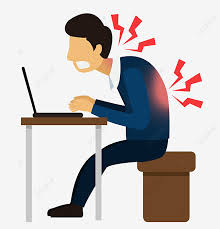
What you Knee’d to know about pain Pt 2
Diagnosing Knee Pain
Knee pain can be caused by many things and can limit your ability to participate in the things you love to do. The cause of your knee pain could be minor or major. Several ways to determine if any of the above is what you are experiencing you may look to have the following performed.
1. X-ray of the knee (shows the bony structure and alignment). Will be able to show arthritic changes occurring in the knee and bony structures.
2. MRI – give a better image of the cartilage, muscles, tendons and ligament to demonstrate how they may be affected.
3. Physical Therapy Diagnostic Exam – PT looks at alignment, positioning, assesses the mobility and flexibility as well as be able to determine which muscle groups have been affected or are affecting the knee joint/pain. Benefits of therapy is that they can also treat the cause of the pain and help you not only feel better but oftentimes be able to return to doing the things you love to do. It involves not cutting, no surgery, no down time. We utilizes a variety of techniques including but not limited to MLS Laser Therapy, Manual Techniques, Dry Needling, Electrical Stimulation and more.
4. Computed tomography scan (also called a CT or CAT scan). Uses X-rays and computer technology to make horizontal images(slices) of the body, including the bones, muscles, fat, and organs. These are more detailed than general X-rays.
Arthroscopy. An invasive diagnostic and treatment procedure uses a small, lighted, optic tube (arthroscope), which is inserted through a small incision in the joint. Images of the inside of the joint are used to evaluate any degenerative/arthritic changes in the joint; to detect bone diseases and tumors; and to determine the cause of bone pain and inflammation.
Radionuclide bone scan. A nuclear imaging technique that uses a very small amount of radioactive material, which is injected into the patient’s bloodstream to be detected by a scanner. This test shows blood flow to the bone and cell activity within the bone.
Key Points
The most common causes of knee pain are related to aging, injury or repeated stress on the knee.
Common knee problems include sprained or strained ligaments, cartilage tears, tendonitis and arthritis.
Diagnosing a knee injury or problem includes a medical examination/physical therapy evaluation and usually the use of a diagnostic procedure(s) such as an x-ray, MRI, CT scan or arthroscopy.
Non-operative options – such as Physical Therapy is available to treat knee pain and will reduce the amount of time that you are off work and away from participating in the things you love to do. Therapy is non-invasive and will teaching you why you are having the pain, help you manage the pain, and correct the things that are contributing to the pain. There are other options that can be used as well but Therapy is the most cost-effective, least invasive and most conservative option that you can choose. Call today to schedule your knee diagnostic exam 815-608-0288
Check out this video on ways to reduce your knee pain. Click here.
Knee’d to Get Active Diagnostic Exam includes
-
- Identifying probable cause of Pain
-
- Determining loss of Motion
-
- Accessing Movement Limitations
-
- Identifying Strength Loss
-
- Identifying Restrictions
-
- Develop Individualized Plan to Decrease Pain
-
- Create Customized Mobility Plan
If you feel like the caterpiller in this picture, then give us a call
Thanks Jameka

